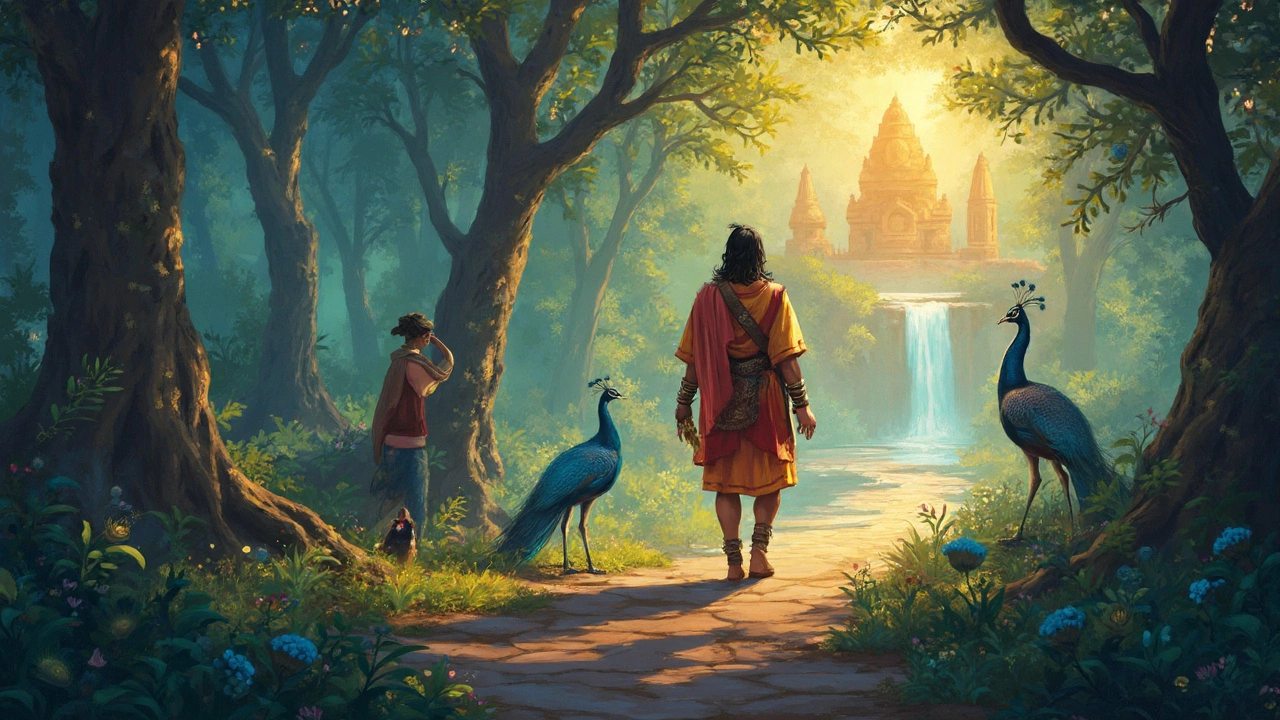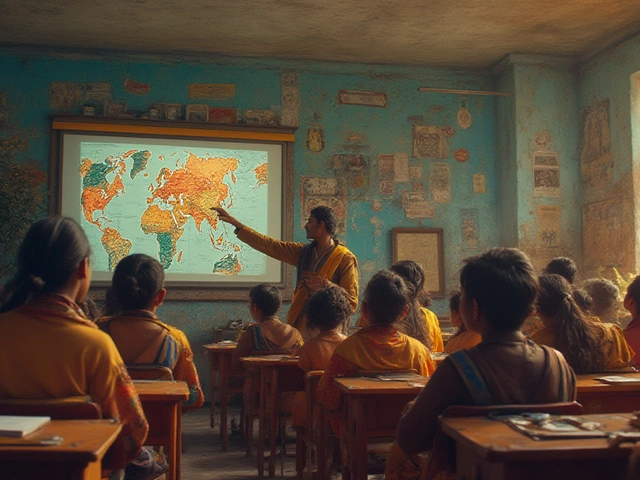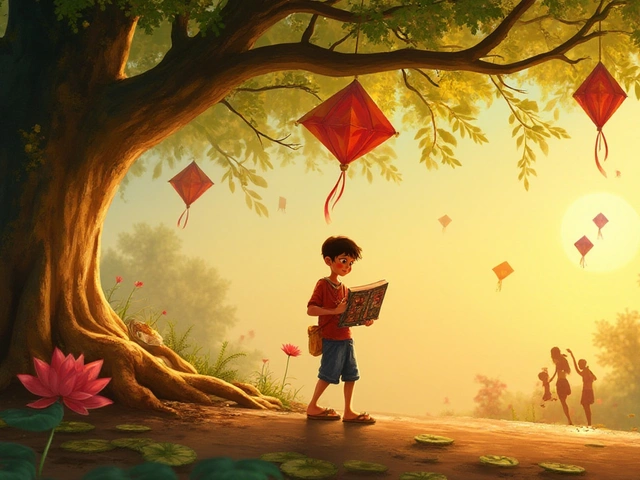
Fantasy adventure stories are like a portal to a world where anything is possible. Think of them as a blend of imagination's wildest dreams and adventure's most thrilling moments. You're probably familiar with classics like 'The Lord of the Rings' or 'Harry Potter', right? These tales invite you to step into realms where magical lands, brave heroes, and epic quests are the norm.
But what makes a story truly stand out in this genre? It's the art of world-building. You can't have a captivating fantasy adventure without crafting detailed and rich environments. Whether it's a sprawling kingdom or a hidden forest, the setting needs to feel alive. Readers should be able to visualize the towering castles, the mysterious woods, and the creatures that inhabit them.
Characters play the next crucial role. A fantasy adventure often follows a hero's journey—a path filled with challenges and discoveries. These characters aren't just wandering aimlessly; they're usually on a mission. Maybe they're fighting to save their home, uncover a lost legacy, or just trying to survive in a world that seems to be constantly testing them. Whatever the case, the stakes are high and the journey is captivating.
- The Essence of Fantasy Adventures
- Building Magical Worlds
- Heroes and Their Quests
- The Role of Magic and Myth
- Crafting Your Fantasy Adventure
The Essence of Fantasy Adventures
Fantasy adventure stories are special because they mix the unreal with the thrill of exploration. At their core, they're about heroes, quests, and magical worlds full of challenges and opportunities. But there's a lot more to them than just a bunch of magic tricks and battles.
Imaginative Worlds
One of the biggest draws of these stories is the worlds they create. We're talking about places where dragons fly, forests that whisper secrets, or cities floating in the sky. Authors spend a lot of energy and creativity to craft realms that feel detailed and real, even though they're pure fantasy. The better the world, the more readers can lose themselves in it.
Did you know J.R.R. Tolkien's Middle-earth is home to over a dozen different languages? That's dedication to creating a believable universe! Such attention to detail helps readers feel they could almost step into these places.
Heroes and Their Journeys
Every fantasy adventure story shines a spotlight on its hero. These characters, whether they're chosen ones, reluctant adventurers, or unexpected heroes, embark on journeys that often mirror real-life coming-of-age tales. Yet, instead of mere growing pains, they're facing down dark lords, uncovering secrets, or battling inner demons—all set against breathtaking backdrops.
Take Harry Potter: his journey takes him from a cupboard under the stairs to becoming a crucial player in the fight against Voldemort. His growth and bravery in the face of danger resonate with readers because they're relatable human struggles, just on a magical level.
Magic and Myth
Magic and mythical creatures aren't just window dressing, either. They're integral, shaping the world's rules and driving the plot. Magic can either be a hero's greatest tool or a frightening challenge, depending on how it's used in the story. Think about how the One Ring in 'The Lord of the Rings' is both a source of power and a curse.
In a nutshell, blending fantasy and adventure feeds our thirst for escapism. These stories give us the chance to explore worlds filled with wonder and challenge, where every decision can lead to epic showdowns or heart-stopping twists. There’s always more to discover and new horizons to explore—both for the heroes in these tales and for us as readers.
Building Magical Worlds
Creating a believable and engaging magical world is a cornerstone of any fantasy adventure story. It’s not just about throwing together some wizards and mythical creatures—there's an art to making these worlds feel lived-in and realistic.
Start with Geography
Think about how the world is laid out. Is there a giant mountain range that separates two feuding kingdoms? Perhaps an enchanted forest that's off-limits but filled with secrets? The geography of your world will impact the story's plot and the characters' journeys. Take 'Middle-earth' for example—J.R.R. Tolkien didn’t just invent a realm, he constructed a detailed geography, complete with maps that guided the narrative.
Establish Rules of Magic
One of the biggest draws of the fantasy genre is magic. But, it shouldn't be a get-out-of-jail-free card for your characters. Lay down specific rules and limitations. Can magic solve any problem, or does it come with a price? In Brandon Sanderson's 'Mistborn' series, magic requires the user to ingest specific metals—simple, but effective rules that add depth to the story.
Create Unique Cultures
Different areas of your world should have their own cultures, languages, and traditions. This diversity enriches your narrative and gives readers something new to discover at every turn. Consider how these cultures interact. Are there age-old alliances or deep-seated grudges? Remember, the cultures should also impact your characters and their experiences.
Make a History
A world is more believable when it has a layered history. What events have shaped the world into what it is now? Wars, treaties, ancient heroes or villains—all these elements can add layers to your story. Think about the 'Harry Potter' universe—its rich backstory includes past conflicts that still influence the present-day events.
Incorporate Technology
While magic is a staple of fantasy, technology can add a unique twist. Maybe some regions use steam-powered machines, while others rely entirely on mystical forces. The conflict between tradition and innovation can provide an engaging subplot.

Heroes and Their Quests
At the heart of every compelling fantasy adventure is the hero's journey. Picture Frodo Baggins from 'The Lord of the Rings'. He's your quintessential unlikely hero, plucked from his humble hobbit life to carry the fate of Middle-earth literally around his neck. This journey is about more than just physical travel; it's an inner journey of growth and transformation.
Heroes in these stories aren't always born with their powers or destined for greatness. Take Harry Potter, who's just a regular kid living under the stairs until he discovers he's a wizard. This sense of discovery and the challenges they face along the way are what make these characters relatable yet extraordinary.
Storytelling often follows a pattern with recognizable elements:
- Call to Adventure: The hero is drawn into the quest, often leaving their comfort zone behind.
- Allies and Mentors: Along the way, they meet friends and guides who help, like Gandalf for Bilbo or Hagrid for Harry.
- Trials and Challenges: They face tests that push them to their limits; this is where the action ramps up.
- Ultimate Ordeal: The final conflict or challenge where everything hangs in the balance.
- Return Home Transformed: The hero comes back changed, having grown through their experiences.
What's interesting is how these stories mirror our real-life struggles. They tap into universal themes of courage, friendship, and the battle between good and evil. That's why we connect with them on such a deep level. Plus, who doesn't love a good underdog story?
| Famous Hero | Quest |
|---|---|
| Frodo Baggins | Destroy the One Ring |
| Harry Potter | Defeat Voldemort |
| Bilbo Baggins | Steal from Smaug and protect the Shire |
The Role of Magic and Myth
In a fantasy adventure story, magic is the secret sauce that turns ordinary into extraordinary. It's what allows characters to perform unbelievable feats, and it's often woven into the very fabric of the world they inhabit. Ever wonder why magic is such a big deal? It's because it creates limitless possibilities and gives writers the freedom to bend the laws of reality. With magic, you're not tied down by what can or can't happen—if you can imagine it, it can thrive in your story.
Magic Systems
A good fantasy story usually has some sort of framework when it comes to its magic. This is what we call a 'magic system.' Some stories stick to simple, mysterious magic, while others create detailed rules. For example, in J.K. Rowling's 'Harry Potter,' magic is rooted in spells and wands, guided by specific rules and restrictions. These guidelines help make the magic believable, even if it's fantastical.
Integration of Myth
Just as important as magic is the integration of myth. Myths are the epic tales, often passed down through generations, that serve as a story's history or backstory. In many fantasy adventures, mythical elements are pulled from the world's own history or from various cultures' legends. Take George R.R. Martin's 'A Song of Ice and Fire' series—dragons and ancient gods drive much of the storytelling, making for rich plotlines and deeper lore.
Mythological creatures like dragons, elves, or orcs are regulars in fantasy literature, creating a familiar yet fabulous backdrop for stories. These elements not only add depth but also connect readers with archetypes they recognize, bridging the gap between the known and unknown.
Contemporary Use
Today's authors often take inspiration from real-world myths but tweak them with a fresh twist. This keeps stories relatable while feeding the appetite for the new and exciting. After all, there's nothing quite like being familiar with a concept and then seeing it subverted in a surprising way.
Combining myth and magic creates a tapestry of adventure that keeps readers hooked. It allows storytellers to explore themes like good vs evil, the hero's journey, or even the quest for meaning. This is why the role of magic and myth in fantasy adventures can't be understated—these elements elevate a simple story into a timeless epic.

Crafting Your Fantasy Adventure
Diving into the world of fantasy adventure writing can be both exciting and overwhelming. But don't worry, breaking it down into manageable steps can help you create an unforgettable story. Start with a rock-solid foundation—your world. Think about the environment your characters will navigate. Is it a vast, enchanted forest or a city floating in the skies? The key is to make sure every setting detail ties into your story's essence.
World-Building Basics
Your magical realm doesn't have to be overly complex, but it should be coherent. Consider the geography, culture, and even the weather. Each element can contribute to the narrative, like a storm affecting the hero's journey. Tolkien's Middle-earth, for example, is a great study in how intricate settings enhance narrative depth.
Creating Compelling Characters
A gripping fantasy adventure needs heroes worth rooting for. Your protagonist should have clear goals or something at stake. Maybe they’re on a rescue mission or looking to discover their own identity. Use relatable traits mixed with some fantastical elements to make them both accessible and unique. Remember, it’s their personal growth that keeps readers hooked.
Weaving in Magic and Myth
No adventure story is complete without a sprinkle of magic or a nod to mythical creatures. Whether it's a wizard casting spells or a dragon guarding treasure, these elements should feel natural to your world. Just be sure to set rules for how magic works to keep it believable and consistent.
Plot Structure
Mapping out your story is crucial. Use a classic three-act structure if you’re unsure where to start. Introduce your world and characters, then dive into the central conflict, and wrap up with a resolution that closes character arcs meaningfully. Don’t forget those nail-biting cliffhangers!
Practical Tips
- Draft a map of your world for visual reference.
- Keep a consistent logic on how magic functions.
- Develop a clear backstory for major characters.
- Read other fantasy adventure books for inspiration.
- Write regularly to hone your craft and develop your story.
Don’t stress about creating a masterpiece from the get-go. Drafts are meant to evolve. Just focus on maintaining your authentic voice and telling a story that matters to you. That passion is what will draw readers into your fantasy world.


